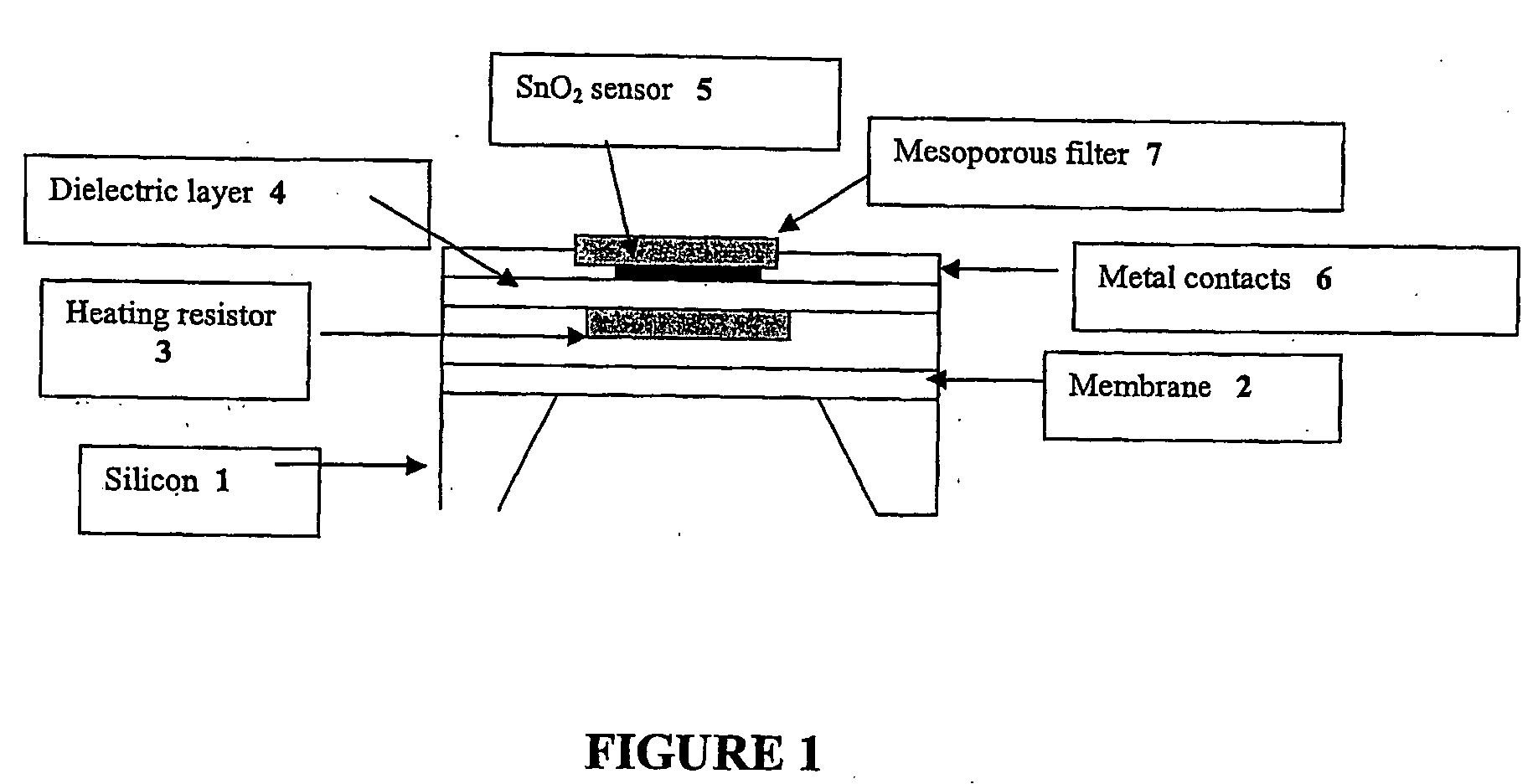Novel nanoporous materials
- Summary
- Abstract
- Description
- Claims
- Application Information
AI Technical Summary
Benefits of technology
Problems solved by technology
Method used
Image
Examples
example 1
[0038]Mesoporous Si3N4—Pd composites may be prepared by pyrolysis of a reaction product of silicon nitride with PdCl2.
[0039]A mixture of mesoporous silicon nitride prepared by a sol-gel route [Angew. Chem., Int. Ed. Eng., 1999, 38, p 2036-2038] and 5% PdCl2 was heated at 50° C. to give a light yellow powder. Heating of the yellow powder at 350° C. under 8% H2—Ar flow led to the formation of metal Pd as shown by XRD analysis. No crystalline silicon nitride can be observed in the XRD pattern. N2 adsorption analysis shows that the composite material exhibits a mesoporous structure with a surface area of 403 m2 / g and a pore size distribution similar to that of silicon nitride. TEM image shows the nano-size (5-20 nm) Pd particles on the surface of silicon nitride.
example 2
[0040]Mesoporous Si3N4—Ni composites may be prepared by pyrolysis of a reaction product of silicon diimide gel with NiBr2.
[0041]A light green powder was prepared by a reaction of silicon dimide gel with a solution of NiBr2. The green powder was pyrolyzed at 1000° C. under NH3 flow for 2 hours. Generally, before NH3 flow, inert gas (Ar or N2) was flowed though the furnace tube to remove a small amount of air which was may be introduced during the connection procedure. However, powder XRD showed that the presence of this inert gas flow before pyrolysis has a great effect on the final products. Pyrolysis under NH3 after, an argon flow gave a black powder (Product Ni1). XRD analysis indicates the formation of crystalline metal Ni. However, pyrolysis under, NH3 after a N2 flow gave a grey powder (Product Ni2). Besides crystalline metal Ni, additional peaks ascribable to β- and α-Si3N4 were observed in the XRD pattern. The formation of crystalline Si3N4 is due to the presence of Ni metal....
example 3
[0042]Porous Si3N4 membranes may be prepared from a silicon diimide sol by a dipping procedure.
[0043]The porous Si3N4 membrane was prepared by dipping a porous α-Al2O3 disk in a silicon diimide sol followed by pyrolysis at 1000° C. under NH3 flow for 2 hours. SEM images indicate the presence of a Si3N4 membrane on the surface of the α-Al2O3 support. The membrane thickness is about 2.3 μm. Since the α-Al2O3 disk is porous and the silicon diimide sol will penetrate the pores of the disk during the dipping, Si3N4 membranes on the surfaces of the pores are also observed. Nitrogen adsorption analysis indicates that although a pore size distribution at 20-50 Å is observed, most of the pores are similar to those of α-Al2O3 disk, i.e., larger than 200 Å.
PUM
| Property | Measurement | Unit |
|---|---|---|
| Pore size | aaaaa | aaaaa |
| Pore size | aaaaa | aaaaa |
| Pore size | aaaaa | aaaaa |
Abstract
Description
Claims
Application Information
 Login to View More
Login to View More - R&D
- Intellectual Property
- Life Sciences
- Materials
- Tech Scout
- Unparalleled Data Quality
- Higher Quality Content
- 60% Fewer Hallucinations
Browse by: Latest US Patents, China's latest patents, Technical Efficacy Thesaurus, Application Domain, Technology Topic, Popular Technical Reports.
© 2025 PatSnap. All rights reserved.Legal|Privacy policy|Modern Slavery Act Transparency Statement|Sitemap|About US| Contact US: help@patsnap.com


